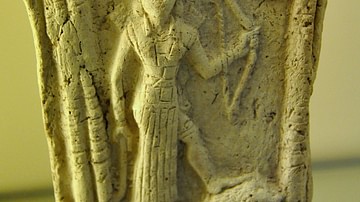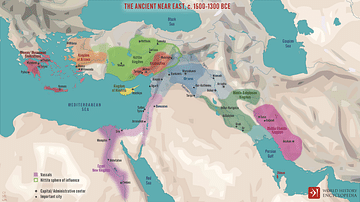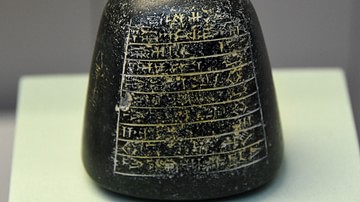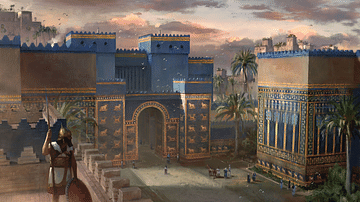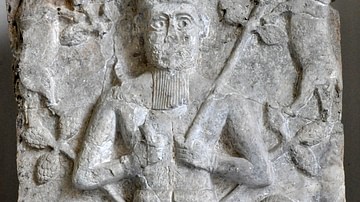In the ancient Near East, there was a social standard by which men were ideally expected to behave. In the 21st century CE, expectations still exist, albeit in different forms. Normative masculinity through ancient Mesopotamia typically concerned male-female interactions. In sexual intercourse, for example, the male was the active person and initiator, with the female as the passive recipient. Another important characteristic was that of descendants. Males, as progenitors of family lines, were expected to have virility, prowess, and strength. Naturally, then, normative masculinity afforded men important social and economic posts in cultic and government organizations. Furthermore, each characteristic of normative masculinity was performed in the public domain, rather than the domestic setting which tended to be regarded as feminine.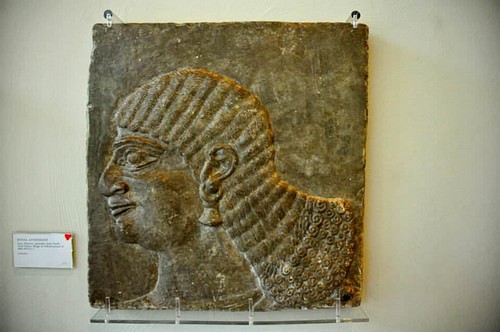
According to a recent argument by Ilan Peled, author of Masculinities and Third Gender, men with normative masculinities attempted to maintain clear, distinguished differences between men and women by institutionalizing non-normative men as third gender figures. This allowed those of normative masculinity to define "clear social markers of rules of conduct and normative behavior patterns" (Peled, 294).
Gala & kalǔ
Before the kalǔ, the Sumerian gala worked as a "chanter of laments" and was not associated with any particular deity. Simply working as a professional lamenter categorized him as feminine because laments were typically performed by women. During the Old Babylonian period, the role of the gala expanded, became a synonym of kalǔ, and was incorporated into the cult of Ishtar. The kalǔ, like the gala in the Sumerian period, was considered a singer and was in charge of many rituals related to music and song. Beyond association with cult practice, association with Ishtar reinforced the gender ambiguity of the kalǔ. In Lady of Largest Heart, a composition for Ishtar, we read a revealing characteristic about her: "Turning a male into a female and a female into a male is yours" (Sjöberg, 190). This perceived ability is important because it demonstrates how the kalǔ were institutionalized into religious practice and ritual of Ishtar in order to maintain strong social distinctions between men, women, and the third gender, characterized as ambiguous, like Ishtar.
assinnu & kurgarrǔ
Like the kalǔ, the assinnu may be understood as ambiguous as a result of being institutionalized into the cult of Ishtar, a gender-ambivalent deity. Throughout texts referring to the assinnu, the figure is often represented as being a passive male, at one point "listed among a group of female cultic attendants" (Peled 2016: 283). As mentioned above, the male was supposed to be sexually active while the female took on the passive role. Because of the assinnu's passivity, he was categorized as a third gender figure.
The kurgarrǔ was often associated with the assinnu, gala, and kalǔ. In the case of the kurgarrǔ, though, he is often represented with weapons, especially daggers and swords. Some scholars consider this evidence of apparent self-mutilation or castration; yet, as Peled notes, references to actual self-mutilation never occur. Thus, according to Peled, kurgarrǔ were part of the cultic performance for Ishtar as militant and masculine. The kurgarrǔ can be considered a third gender figure due to his involvement in the cult of Ishtar and association with other third gender figures.
lύ-sag & ša rēši
lύ-sag and ša rēši are synonymous terms for the same figure: a palace attendant typically in charge of women's quarters within a palace. They were permitted to do so because they were castrated and eunuchs. Attestation of this figure as castrated is only apparent, though, in the Middle and Neo-Assyrian periods. While they functioned in the same manner prior to these periods, evidence of castration is lacking. Some lύ-sag / ša rēši even acted as military commanders. As eunuchs, though, they maintained some masculine gender identity. For virility could still be maintained were the castration only partial. Even so, the consequences of castration meant they were not considered normative in regard to masculinity, hence their institutionalization in royal bureaucracies as military commanders or people in charge of women's quarters.
Other Third Gender Figures
Unfortunately, there is not enough textual evidence to provide a complete image of third gender figures. However, a few others may be worth mentioning: girseqû, a childless male figure within palace administration; tiru/tīru, likely a childless castrate and part of palace bureaucracy; SAG-UR-SAG, “effeminate cultic personnel similar to the assinnu… after the end of the Old Babylonian period the office of the SAG-UR-SAG ceased to exist” (Peled 2016, 267); and pilpilû, a member of the Ishtar cult with feminine traits.
Men throughout the ancient Near East were marginalized by men of normative masculinity for improper adherence to the social order. As Peled notes, "
Members of the third gender were not excluded from mainstream society because of their peculiarity. On the contrary, they were invented and re-invented each period by hegemonic [or normative] masculine men of their own society…, social anomalies who constituted an integral part of their society. (Peled, 294)


